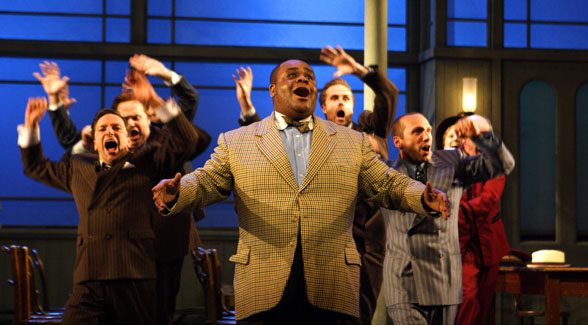As many folks noted in comments here, that post the other day on evangelical conversionism was inspired by the current conversation about the many holes, contradictions and absurd claims in Ben Carson’s immensely popular conversion narrative. Kevin Drum looked at one of those claims recently — the weird story Carson tells in which he spins a faulty memory of getting pranked by a hoax exam into a tale of divine providence and virtue rewarded.
Here’s Kevin’s conclusion:
The beating heart of Carson’s personal story is about his redemption by God. So he says he had a violent temper as a kid, and then became a new man after praying in a bathroom one day. In fact, God turned him around so thoroughly that West Point offered him a full scholarship. He went to Yale instead, where the Lord took care of his finances when he was in desperate straits. And as a bonus, it was because of his Christian inability to tell a lie.
… Carson knows his audience. Serious evangelicals really, really want to hear a story about sin and redemption. That requires two things. First, Carson needs to have been a bad kid. Second, redemption needs to have truly turned his life around. He was already a student smart enough to get into Yale, so he needs more.
That’s where these stories come in. He needs to exaggerate how violent he was when he was young. And after he finds God, he needs to exaggerate how great everything turned out. This culminates in the absurd story about his psychology class. No one who’s not an evangelical Christian would believe it for a second. But evangelicals hear testimonies like this all the time. They expect testimonies like this, and the more improbable the better. So Carson gives them one.
Set aside the particular example of Ben Carson. The key point here is the way this evangelical conversionist trope encourages — maybe even requires — exaggeration, which is to say that it encourages or requires dishonesty. As Kevin notes, it compels/induces/rewards/expects/elicits a two-fold dishonesty — one that exaggerates our wickedness prior to the moment of conversion and then exaggerates our transformation after that moment.

This is troubling because — as we know from reading the Left Behind series — this conversion experience is supposed to be all about passionate sincerity and sincere passion. It’s meant to be a moment when the soul is laid bare — an epiphany of peak honesty. Yet that same moment is immediately expected to conform to a conversion narrative trope and will very quickly be reshaped and reinterpreted and revised to fit the expectations of that trope. The ritual of the personal testimony can thus introduce dishonesty into the thing about which we’re supposed to be most nakedly honest.
For young people raised in evangelical churches, this can ironically create a situation in which the ritual of reciting their personal testimony of conversion becomes an entry into the “life of sin” that they never really had prior to their conversion. That’s … not good.
Daniel Burke, who reports on religion for CNN, addressed all this yesterday in a piece titled “The dirty little secret about religious conversion stories.” Burke starts with a helpful analogy:
There’s a strange resemblance between religious conversion stories and weight-loss ads: both rely on astutely edited “before” and “after” images.
To sell slimming products, the camera first shows a man facing forward, flaunting his flabby gut and lumpy love handles. In the “after” shots, the camera is angled to the side, highlighting a newly narrowed midriff.
The goal of the illusion isn’t to just make the man look better, of course; it’s to make viewers believe that a product has the miraculous power to turn blubber into brawn.
As anyone who has spent time in a church, synagogue, mosque, temple, sangha, AA meeting or prison knows, a similar effect can arise in religious conversion stories. The “before” pictures, in particular, tend to darken. The snares of sin sharpen, the descent into depravity deepens.
Burke identifies two pressures that lead to this tendency toward exaggeration. First there’s the basic shape of the story, which itself encourages embellishment. And second, as he hints at in the analogy above, there’s the sales-pitch function of such stories. Conversion narratives are marketing conversion in a similar way to how those weight-loss ads are marketing diet pills, and that sales pitch is likely to be more effective if both the before and after pictures are made to look more extreme.
I think Burke is right about both of those pressures, and he provides a good discussion of them. But I don’t think either of those is the main reason — or the most troubling reason — that such conversion narratives tend to slide into dishonesty.












